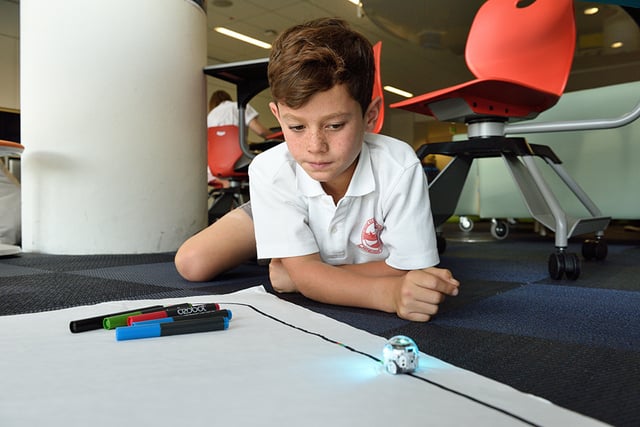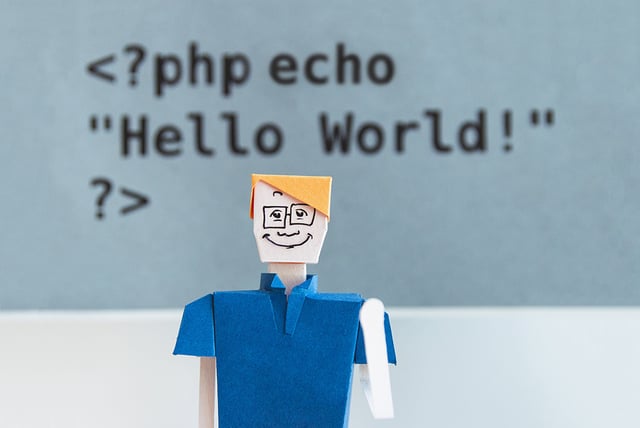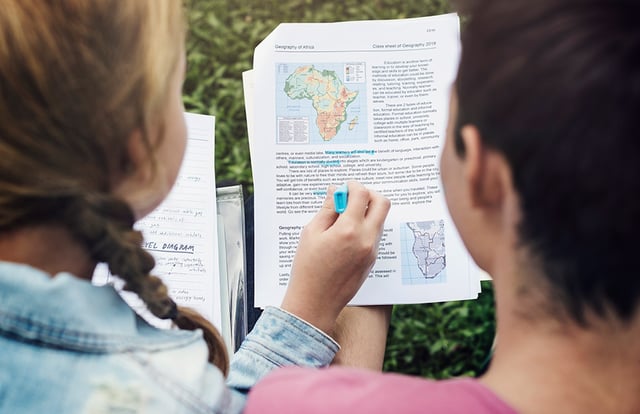For Future Readiness, Coding for Students Cannot Wait
 Insights By Marcos Navas
Insights By Marcos Navas
With future-ready energy sweeping the country, it brings up a good conversation in educational circles on what school districts are doing today to prepare learners for the future of work. We no longer can continue to engage our learners with the same methods, mindset, and pedagogies that were utilized when we were students.
Let us be reminded that our current educational system was created in the times of the Industrial Revolution to prepare the youth for factory jobs. The era of the teacher in front of the room as the sole source of information is over. We need to shift to a student-centered classroom that focuses on problem-solving and interactive and authentic learning.
A Student Engagement Model for the 21st Century
We are dealing with a new generation of learners that have been brought up on iPhones and iPads, and it makes a difference in how we teach them. Classrooms must be just as engaging, interactive, and dynamic as all the competing stimuli in students’ lives. Putting technology in students’ hands is not enough to engage today’s digital learners in a meaningful and authentic way.
Students engagement models differ, but research and practical experience tell us that high levels of student engagement occur when the following is present:
- Well-planned lessons connected to standards and scaffolded with memorable beginnings and endings.
- Collaborative and interactive learning that emulates the real world.
- Problem-based teaching and learning to make the experience relevant.
- Routine access to varied digital tools in environments in which students measure their own growth.
To help educators integrate coding and build this sort of learning environment, this article provides resources, ideas, and information to answer, what is coding for students and why is coding important?
What is Coding for Students?
Coding is the process of developing and implementing various sets of instructions to enable a computer or robot to do a certain task. Coding and computer programming are an integral part of computer science.
The Coder Mindset
Coding requires a growth mindset in order to be successful. This is true for students and teachers, who are both learners in this process. A growth mindset is the belief that intelligence and skills can be developed by putting in a sustainable and consistent effort. It creates a love of learning.
Part of coding is being meticulous and persevering; it’s looking for problems and trying to solve them, and a negative, fixed mindset cannot solve problems appropriately.
“In the fixed mindset, if you fail; you’re a failure. In the growth mindset, if you fail; you’re learning.” Carol Dweck, Author of MINDSET
I tell my students that you are going to fail many, many times and that they have to be okay with that. Failure is the ultimate opportunity to learn, so I tell my students to embrace failure. I want to fail quick, fast, and early so I can learn from the experience and move forward. With coding, students are going to fail, and they are going to want to quit. Teachers need to be the voice of reason: ‘Don’t quit. There’s an answer to this.’
In this future-ready world, teachers must learn from students. To be successful with coding, teachers also have to embrace learning from students.
Computational Thinking
Computational thinking is at the core of the coder mindset. Computational is a logical approach to problem solving that uses principles in computer science to solve problems.
Computational thinking does not require a computer and can be applied to ANY problem, task, or system; its five parts identify problems and formulate solutions.
What are the steps of computational thinking?
- Decomposition: Breaking something down into smaller, more manageable parts
- Pattern Recognition: Looking for similarities and trends
- Abstraction: Focusing on what is most important and ignoring what isn’t
- Algorithmic Thinking: Creating step-by-step instructions to solve the problem
- (Plus) Debugging: Finding and fixing errors in the algorithm
We are all computational thinkers and computer scientists; our brains naturally recognize patterns, create algorithms, and debug solutions.
When a problem arises, I tell my students, figure it out and work with their peers. We do a lot of hand holding, but we need to challenge students to solve it. That’s not just a tip for coding; it’s a lifelong skill they need.
Why is Coding Important?
Try this visualization exercise: Close your eyes. We are getting ready to jump in time to the year 2030. What does this world look like? What are some of the key skills needed for this world?
Are we still going to be relying on pens and notebooks or standardized testing? Or is coding, STEM, the maker movement going to be dominating the future?
I lean toward the second one and visualize a future that is going to rely heavily on robots, computers, technology, and innovation.
The kindergarten class that graduated at the end of the 2017-2018 school year will be graduating high school in 2030. We can’t wait until the year 2029 to start this because students are graduating the next year. It needs to be brought gradually into existing curriculum and scaffolded.
We live in a digital world where everyday items such as a smartphones, appliances and even light bulbs rely on code to operate. And with the future heavily resting upon technology for day-to-day living, we need to start preparing for that new world.
The Current State of Computer Science
Only 40 percent of schools currently teach coding, but 100 percent of the students in the country will need this skill.
Computing jobs are the number one source of new wages in the US. There are currently 500,000 unfilled positions. These jobs are in every state and every industry, and they’re projected to grow at twice the rate of all other jobs.
The STEM problem is in computer science: 58 percent of all new jobs in STEM are in computing, but 8 percent of STEM graduates are in computer science.
Every 21st century students should have a chance to learn about algorithms, how to make apps, and how the internet works. A lot of our kids are consumers of technology, but they don’t know the production side and inner-workings of it. Making them familiar with this is critical.
Ultimately, getting future ready starts now.
If we believe and understand that the future will weigh heavily on technology and coding, we need to expose our students to coding today. Coding allows learners to go from users and consumers to creators and producers in the digital world!
Let us prepare today’s students for tomorrow.




